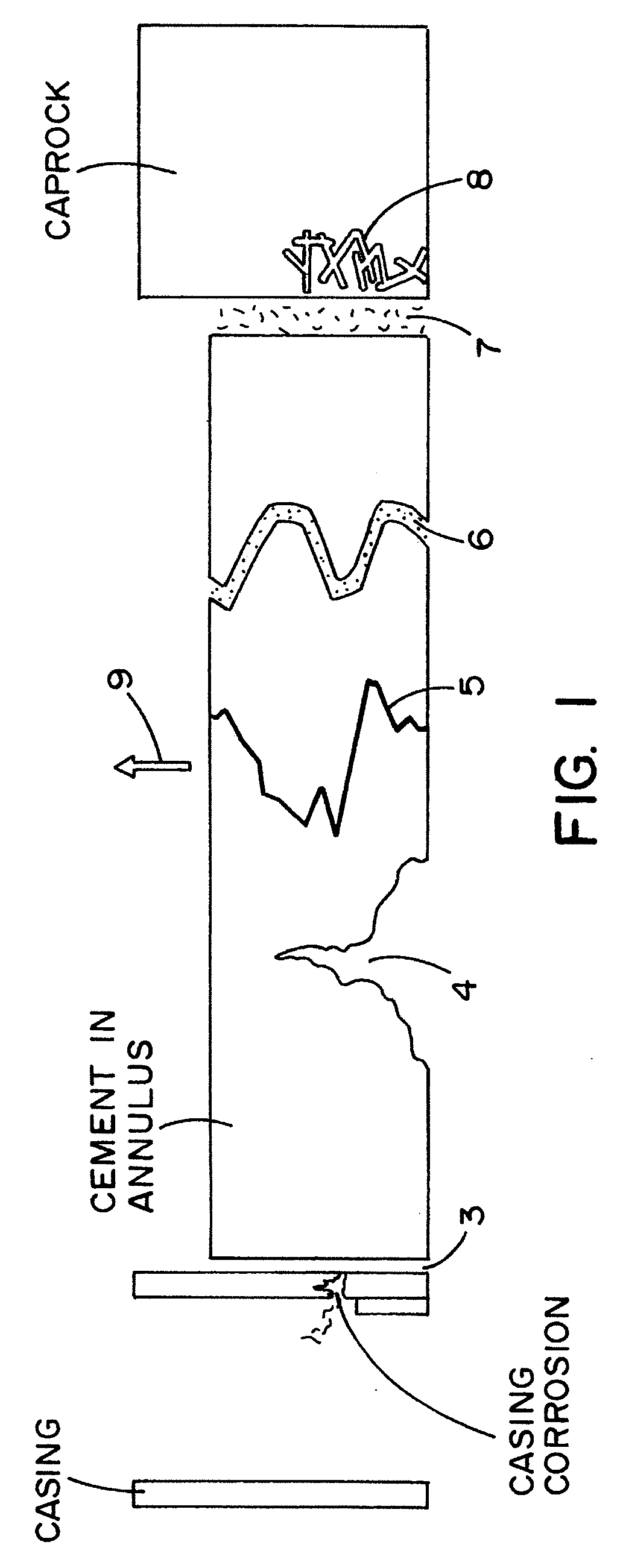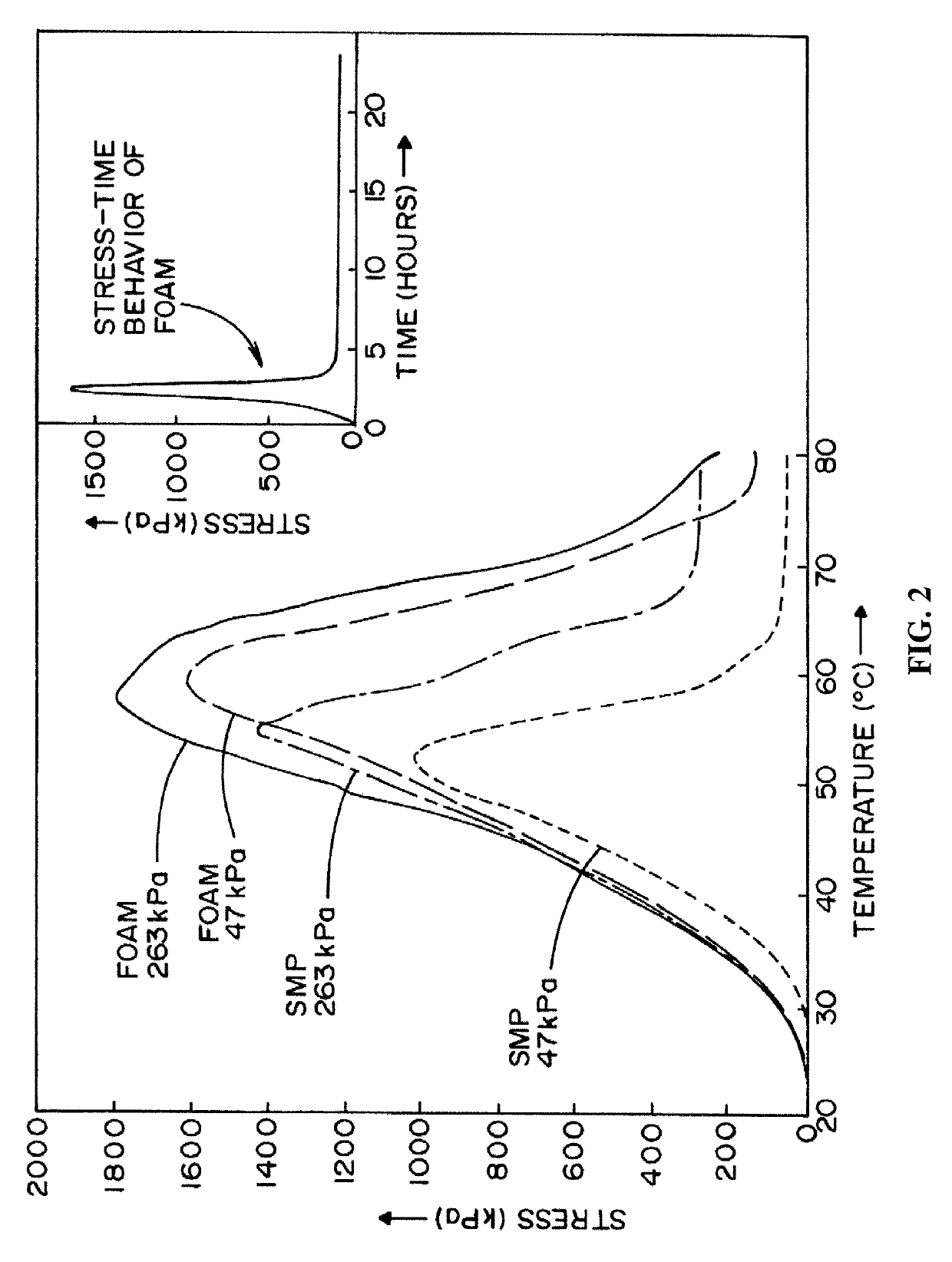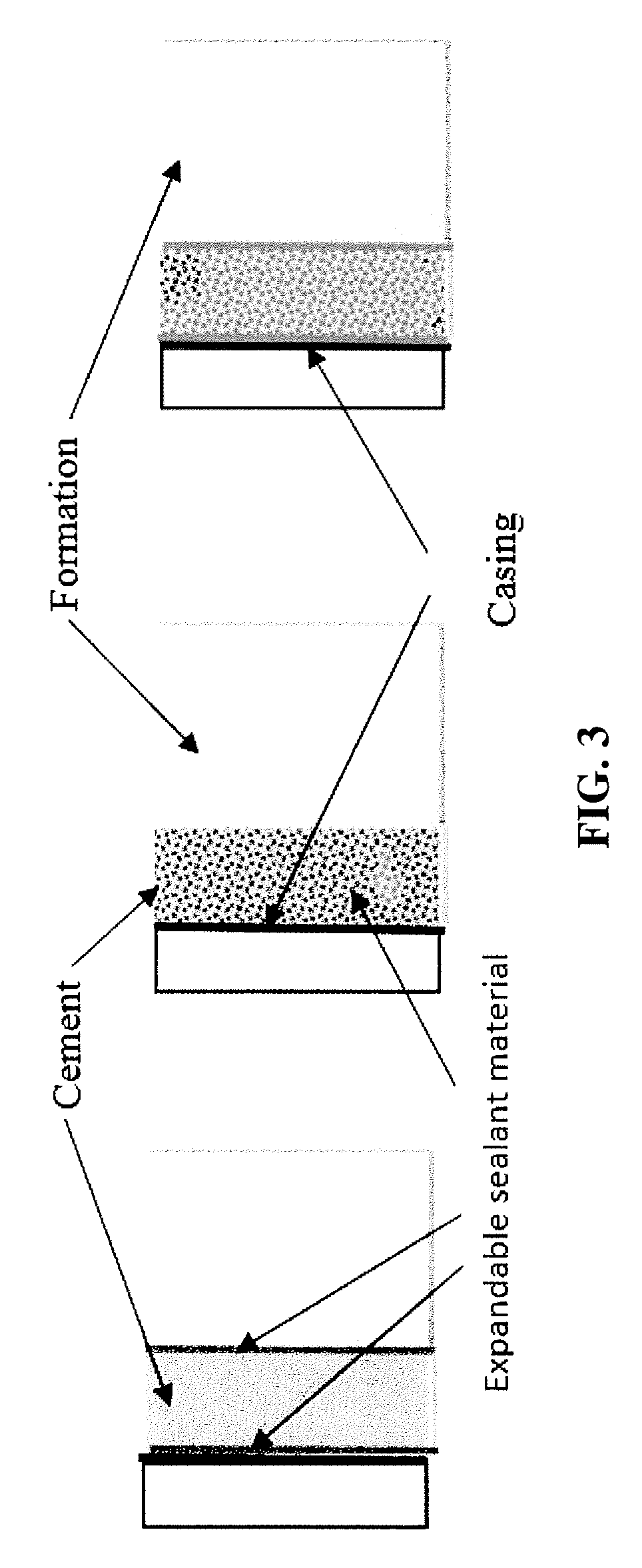Method of Improving Wellbore Integrity and Loss Control
a wellbore and integrity technology, applied in the direction of sealing/packing, wellbore/well accessories, chemistry apparatus and processes, etc., can solve the problems of significant loss of pressure containment, failure of cement/casing bond, and costly drilling, so as to improve the integrity of the wellbore
- Summary
- Abstract
- Description
- Claims
- Application Information
AI Technical Summary
Benefits of technology
Problems solved by technology
Method used
Image
Examples
example 1
[0142]An expandable sealant material is fabricated by compounding 35 wt. % of milled degradable magnesium chips (Tervalloy™) with S-series™ ellastolan thermoplastic polyurethane (BASF) in a compounding extruder and then injection molding the mixture into 30 mesh beads. Upon exposure to 70° C. water for 48 hours, the expandable sealant material exhibited a 94% volumetric expansion, and the expanded expandable sealant material has a 92 shore A hardness.
example 2
[0143]The expandable sealant material beads of Example 1 were blended at 3 wt. % into a class B cement and poured in the annulus between two pipes. A strain gauge was attached to the outer casing, which showed a ½% strain, indicating that the cement was placed in compression. Sectioning of the cement after one week showed no significant microcracking or micro-annulus cracking at either cement / steel interface.
example 3
[0144]An expandable sealant material was fabricated by compounding 30 wt. % milled, degradable magnesium chips into elasstolan TPU using a mixtruder. The extrudate was extruded into filaments which were twisted into rope with a ¼″ diameter. The rope was cut to 4″ lengths and knotted to form ⅝+ diameter knots. 300 knots were added to circulating mud where the expandable sealant material successfully sealed fractures and reduced circulation loss by over 95% after four hours.
PUM
 Login to View More
Login to View More Abstract
Description
Claims
Application Information
 Login to View More
Login to View More - R&D
- Intellectual Property
- Life Sciences
- Materials
- Tech Scout
- Unparalleled Data Quality
- Higher Quality Content
- 60% Fewer Hallucinations
Browse by: Latest US Patents, China's latest patents, Technical Efficacy Thesaurus, Application Domain, Technology Topic, Popular Technical Reports.
© 2025 PatSnap. All rights reserved.Legal|Privacy policy|Modern Slavery Act Transparency Statement|Sitemap|About US| Contact US: help@patsnap.com



